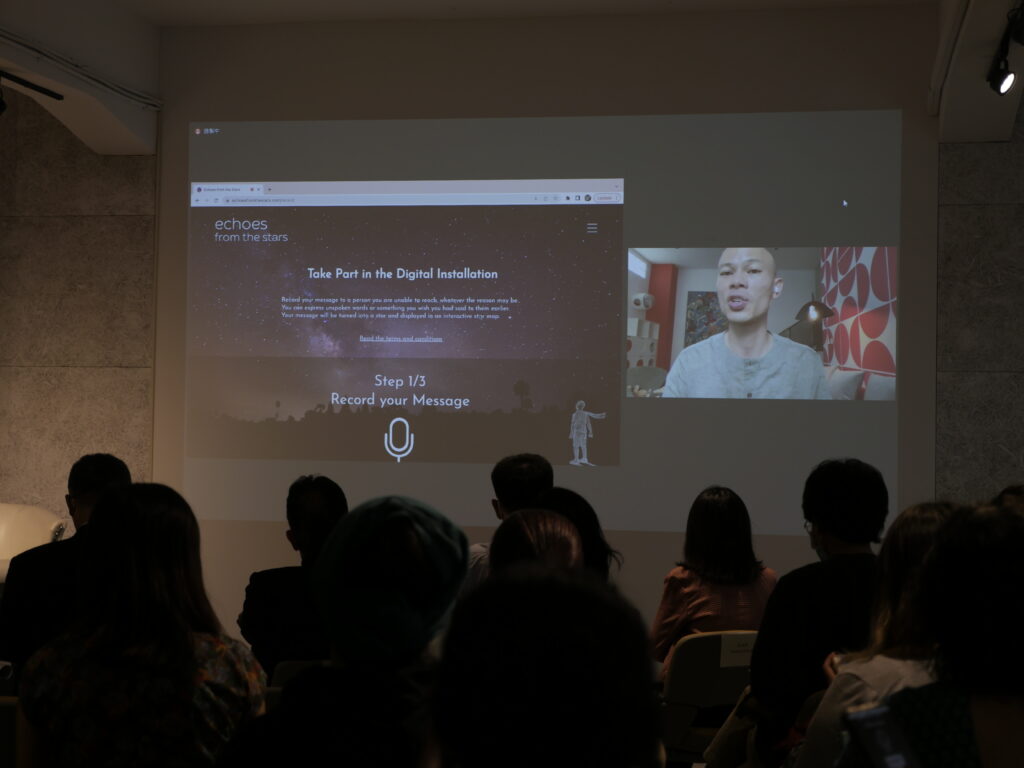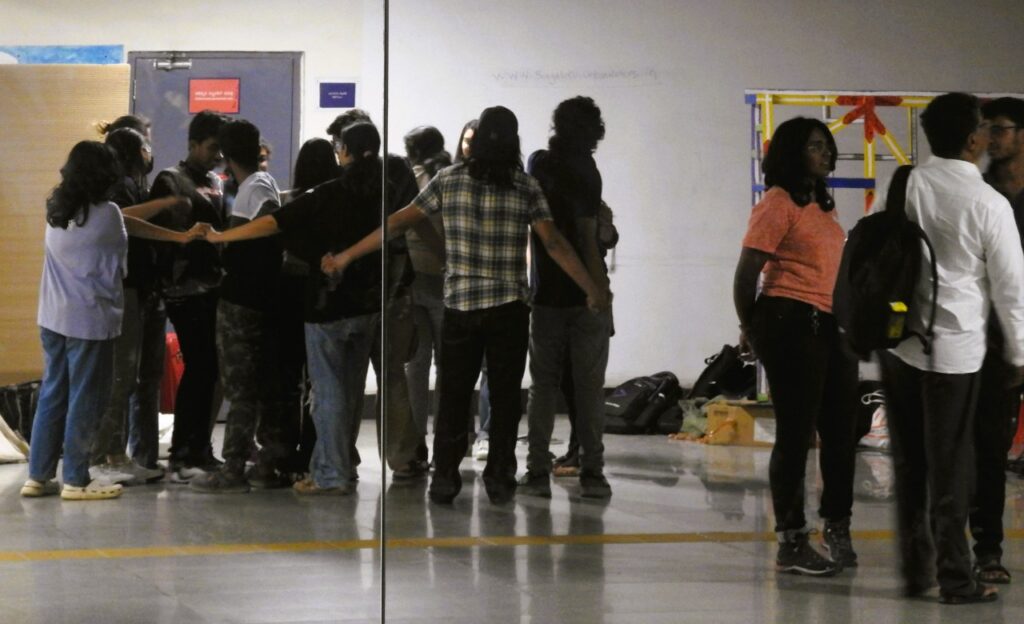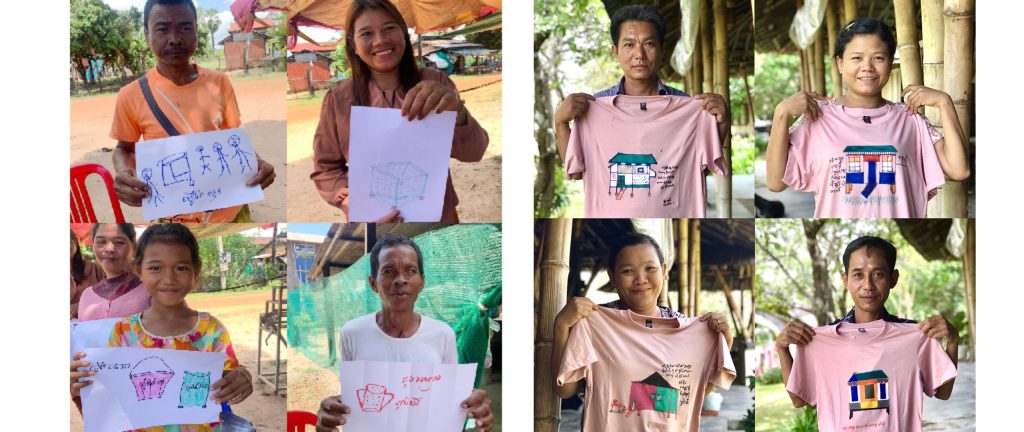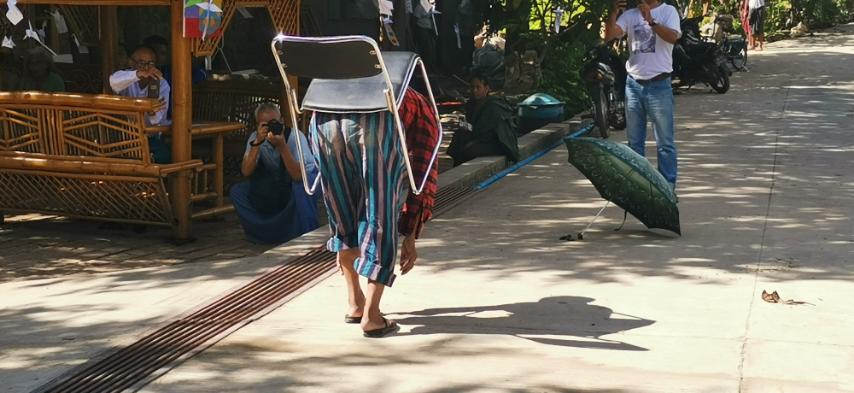Collaboration in Action – Artist Networks in Asia by Deborah Augustin
“After ten days, the Meeting Point came to a close with many new connections made. The sharings and presentations, which were often the result of collaboration, showed how important collaborations are to artistic practice and community engagement. It’s a contrast to the myth of the lonely artist who can only make work while holed away from society.“
This guest blog post is written by freelance writer Deborah Augustin, who is also the Membership Engagement Manager and Malaysia Lead at New Naratif.
From 20 – 29 October artists, cultural workers and civil society organisations from around Asia came together at the 2022 Meeting Point organised by Mekong Cultural Hub. The Meeting Point is an event held every 18 months that allows art practitioners working at the intersection of art and community to gather and learn from each other, share tools and resources, and connect. In the third year of the pandemic, the Meeting Point saw a mix of online and in person events in different Asian cities with an opening co-hosted by the Taiwan-Asia Exchange Foundation in Taipei.
Collaboration in Action
Prior to the Meeting Point, artists had been working on projects across borders that they would present at the event. While some met up in person to collaborate, others managed their collaborations totally remotely. It was in keeping with the theme of this year’s Meeting Point: From Connection Collaboration. But MCH was not interested in simply facilitating collaboration or demonstrating that cross cultural collaboration is possible. Instead, the Meeting Point raised important questions about the nature of equitable collaboration and its challenges.
Though successful collaborative projects also shone at the Meeting Point. Two notable collaborative projects that were featured were the Covid Time Capsule and the Echoes from the Stars digital installation. Both projects saw artists from different countries in Asia coming together to produce an art object despite the challenges of working remotely and across cultures and borders.

The Covid Time Capsule was the brainchild of Arief Hamizan from Malaysia, Jeffrey Tan from Singapore, Regina Yuching Lin from Taiwan and Narumal Thammapruksa, known as Kop from Thailand with curator Anmol Vallani from India. Previously, the group had worked on the presentation “In the Wake of COVID: Altered Contexts and Prospects for the Arts in Asia” for the 2021 Meeting Point. In 2021, the artists had met over a period of five months to discuss how the pandemic had affected them as artists. As a result of those conversations they had produced individual projects that were presented in 2021. However, the encounter proved a lasting one as the group returned this year with the Covid Time Capsule, which collected objects and stories from people around the world about their pandemic experience.
When reflecting on the process of collaboration remotely, Lin said, “After two years when a lot of people would say online collaboration is not reliable…we proved that it can be workable.” To prove her point, despite the success of the group’s project, they have yet to meet in person. So online collaboration is not only possible, but it can be incredibly successful and fruitful as seen in this case.
While cross cultural and transnational is no doubt possible, it is not always equitable. Particularly when funders or collaborators may come from Western countries. This was the subject of the presentation “From Connection to Collaboration: How Fair Can it Be?” by Sudebi Thakurata. With five other core members, Thakurata had come up with the Not a Toolkit! Fair Collaboration in Cultural Relations toolkit. The cheekily named toolkit was conceived to address the fact that collaborations are not always fair or ethical despite best intentions.

Some scenarios where unfair conditions had arisen during collaborations included unequal compensation or stipends for artists and cultural workers in the Global South versus their counterparts in the Global North. It was clear that the audience was all too familiar with such scenarios. Thakurata said that the need for such a toolkit became even more urgent during the pandemic when existing inequalities widened.
But initially, the toolkit faced resistance as those who were targeted for its use felt they had seen too many top down toolkits already. Thakurata and her collaborators were well aware of this and designed it around content, context and concept rather than a form, function, and aesthetic design approach, which is typical when designing toolkits.
Attendees got a chance to see the toolkit in action as the session swung into interactive mode. The toolkit has five bundles of concepts in PDF form that can accessed for free and used for “A ReflAction”, that’s reflection and action. During the session, attendees reacted to the terms like first world/third world, developed world/developing world, low income countries/high income countries and Global South/Global North. How did we feel about these terms? Were they problematic? Why?
As a group we then learned about the terms minority and majority world conceived of by Bangladeshi photojournalist Shahidul Alam in place of developed and developing world respectively. There was a collective light bulb that went off as people processed the implications of using such a term and how it shifted the power imbalance of seeing “developed” or Global North countries as superior in some way. As a whole, Not a toolkit! offers plenty of opportunities to role play situations of injustice, brainstorm ways forward, reflect on terms like equality, fairness, injustice and collaboration instead of taking it for granted that we have shared understandings of how to approach these scenarios and concepts. The energising effect that the exercise had was clear and the toolkit will no doubt be a welcome addition to future collaborative projects for those who use it.
“We are doing it here.”
One of the exciting features of the Meeting Point is precisely that it functions as a meeting point for artists across Asia to share and collaborate. It felt like the Meeting Point was uncovering a shift in the dissemination of knowledge and skills. Prior to the Meeting Point, I spoke to writer and multi-disciplinary artist Jean Baptiste Phou, whose film My Mother’s Tongue kicked off the Meeting Point. I asked Phou if being in conversation and connecting with other Southeast Asian artists had affected his practice as an artist. He said, “I often have this preconcept that knowledge is from the West…that skilled people are from the West, [and] that anything creative is from the West…but now…we are doing it here…we can collaborate with people from here. We don’t have to look for grants or for people or for skills or for human resources [from the West]. And that used to always be the case…[if] you had something lacking, you had to fly somebody from there, and now you can do your projects here.”
A great example of knowledge created in Asia was from the “Evaluating Socially Engaged Art Practice in South Asia” panel. Members of MCH partner, Khoj, an autonomous not for profit contemporary arts organisation from New Delhi shared how they have developed a “theory of engagement” to evaluate their projects. Typically, funders would ask them to use the “theory of change” to evaluate or propose projects. Khoj felt that it was hard to actually measure the change and impact of their projects as experiencing art is often more emotive. They also felt that the theory of change constrained projects as it was more rigid and required them to have goals from the beginning. Through research that included looking at existing frameworks used to document arts and activism they found that there were still gaps they could fill. Khoj were also interested in developing a framework from a South Asian perspective as most of the theories they studied were from the West.
Enter the theory of engagement. In this theory, the process of engagement is seen as the fundamental driver of an art intervention and its impact. Using this theory also allows for adaptability as practitioners can create goals as they go and adapt the project to the situation if need be. The panel participants were excited that a new way of measuring impact might be possible for them. Some of them said that they too had been forced to use the theory of change when applying for grants and shared that they had similar frustrations with this model.
Collaboration in the Community
Alongside the collaborative projects created for the Meeting Point, Meeting Point participants also got to see the result of collaborative projects carried out by artists with their communities. At the “Creative Approaches to Engage the Community” panel, artists Khin Thethar Latt from Myanmar, Sinath Sous from Cambodia and Thanupon Yindee from Thailand from the Delta X program shared their experiments in engaging their communities.

In a welcome break from typical zoom panels, the artists began the panel with creative definitions of socially engaged art that included interpretive dance and the use of masks. They then presented the different projects they had embarked on with their communities. The projects were diverse in the issues they addressed, from flooding in Chiang Mai, understanding the needs of a displaced slum community in Yangon and creative impact assessment of an environmental festival. The artists shared the different methodologies they used to carry out their projects as well as the challenges they faced.
The projects were often high stakes. For Golf who carried out community mapping of a flood prone area in Suthep district with children and adults, there was the sensitivity of local authorities to balance against his findings. There was a possibility he could endanger both the community and himself and the artist he worked with. While for Khin Thethar Latt whose project was completed before the 2021 coup in Myanmar, the confidence and learnings she had from her project are lessons she hopes to apply in future projects in the current conflict situation.
Another notable feature of the Meeting Point was the opportunity to hear from artists in Myanmar who are making work with their communities with the challenge of an ongoing conflict. As we come to the end of 2022, there is less coverage of the war in Myanmar for those who don’t specifically seek this news out. Burmese artists and cultural workers were featured throughout the Meeting Point in panels and presentations while The Pluralism Toolbox session focused specifically on current projects in Myanmar.

At this session, artists and civil society organisations in Myanmar who had worked with the Swiss development fund Helvetas presented projects inspired by Helvetas’s toolbox of artistic projects that inspire social cohesion. It was one of the few sessions with a breakout room where audience members had a chance to speak directly with the artists. Though there were sometimes hiccups in understanding one each other due to language barriers. Nevertheless, everyone did their best and patiently rephrased and repeated their questions until everyone was on the same page.
After ten days, the Meeting Point came to a close with many new connections made. The sharings and presentations, which were often the result of collaboration, showed how important collaborations are to artistic practice and community engagement. It’s a contrast to the myth of the lonely artist who can only make work while holed away from society. It was a timely reminder after almost three years of pandemic imposed isolation that coming together is a vital part of the creative process. In fact, these connections were clearly not just for the event. Seeing past collaborators continue to work together and the electricity of new connections, it’s clear that there are more good things in store from these meetings.